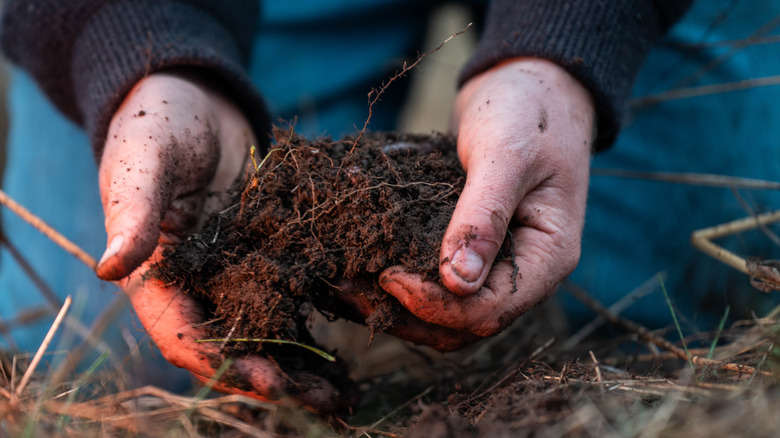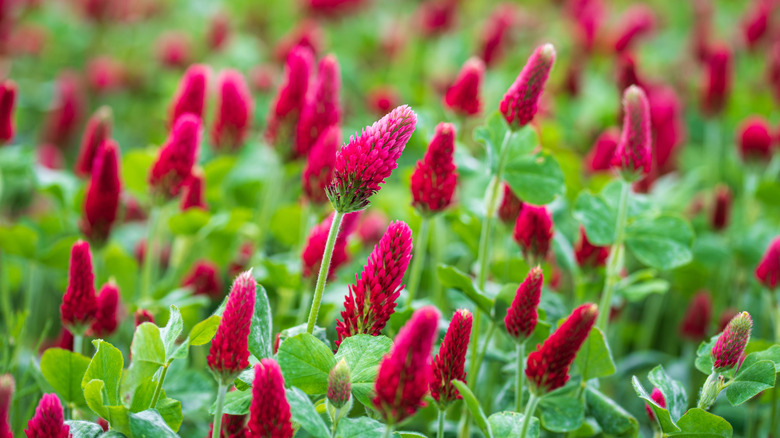The Pretty Cover Crop You Can Grow In Fall For Healthier Soil In The Spring
Is this the year you try cover crops, the plants that create healthier soil in your yard and garden? Maybe it should be if you're concerned about spring planting. Does your soil have a weak structure or tend to erode? Does it lack organic materials that you try to replace with fertilizer? Are weeds driving you nuts? Cover crops might be the solution. If you're on the hunt for one, we recommend crimson clover (Trifolium incarnatum), a gorgeous, cool-season annual legume that sprouts vivid, plume-like flowers.
Crimson clover can address all of the aforementioned issues, and it can even fix the nitrogen in your soil. Like other cover crops, it contributes organic material, helps suppress weeds, and fights erosion. This plant grows rapidly and provides pollen for honeybees, not to mention food for other pollinators. Just keep in mind that deer are also fond of this clover.
Loamy soil with good drainage is ideal, as poor drainage may invite disease. Plant in the fall before the first hard freeze to help the clover suppress weeds over the winter. Proper germination requires cool temperatures at or below 60 degrees Fahrenheit, and for best results, consider using seeds already inoculated with rhizobacteria.
How to care for crimson clover
Mow your crimson clover in the spring as you prepare to use the area for planting, leaving remaining vegetation to decompose. To make your spring soil's nitrogen more readily available, add organic matter to the soil or till the clover crop underneath. Tilling allows for faster nitrogen release but may disturb the soil. If you want to avoid more clover, mow or till your crop in the spring before it goes to seed. If winter temperatures in your area are cold enough, crimson clover will die on its own, and the debris will decompose.
Crimson clover, like other cover-crop clovers, can also act as a full or partial lawn replacement. Some gardeners, however, question if a clover lawn is worth the trade-off. It likely won't be as rugged as turf grass and may not do well in all growing conditions. Fortunately, it will do well in a shady yard, and its reseeding process can make lawn maintenance easy. This clover also serves as a fast-growing companion that gives tomatoes a boost while blocking out weeds, and as an easy grass alternative to fix patchy spots in your lawn.

